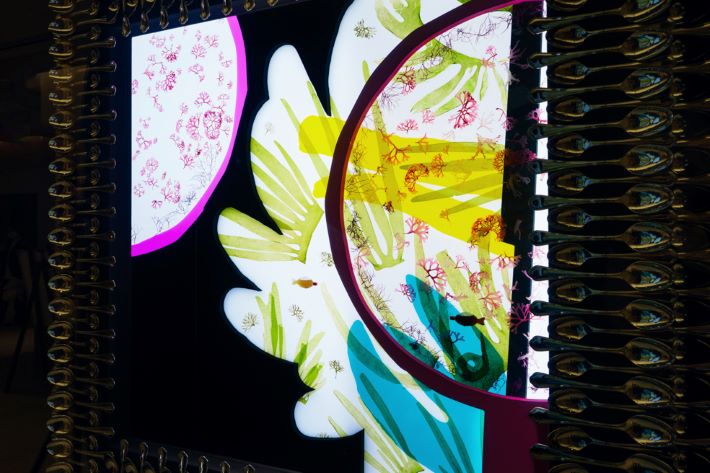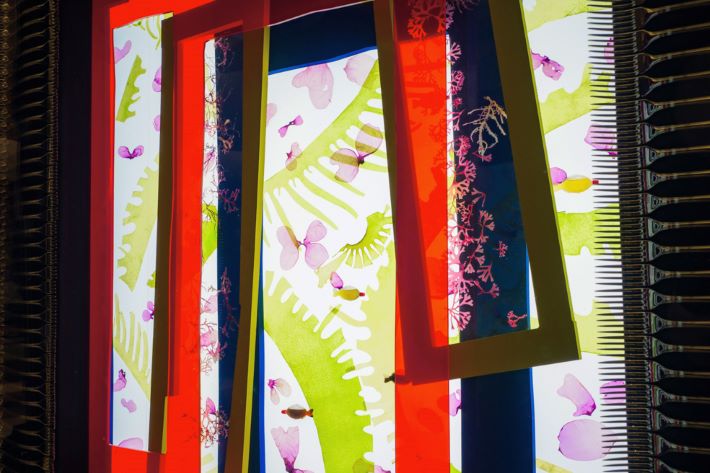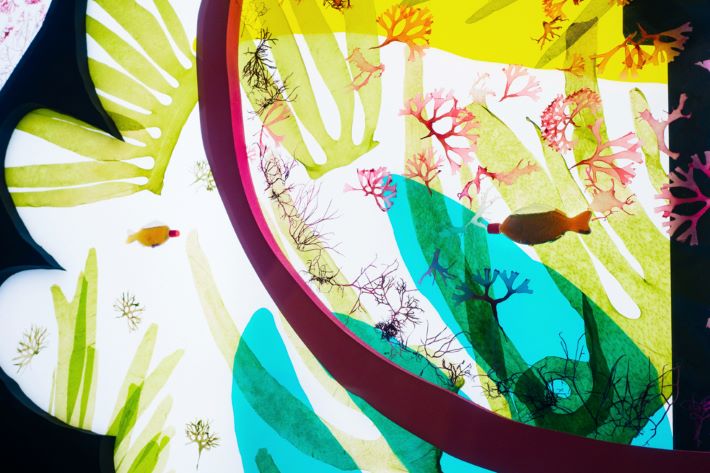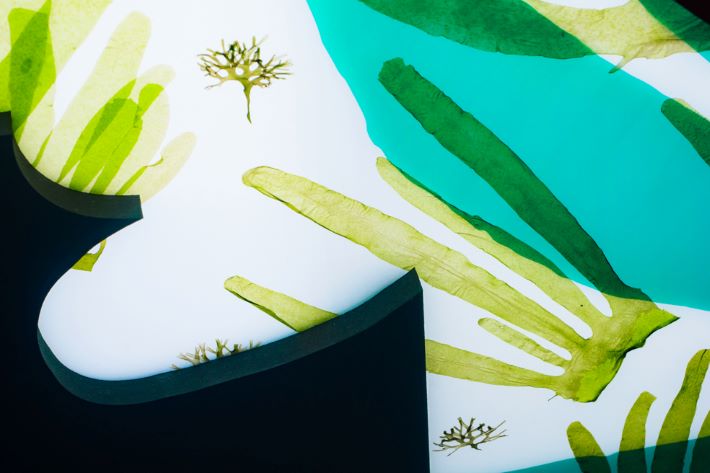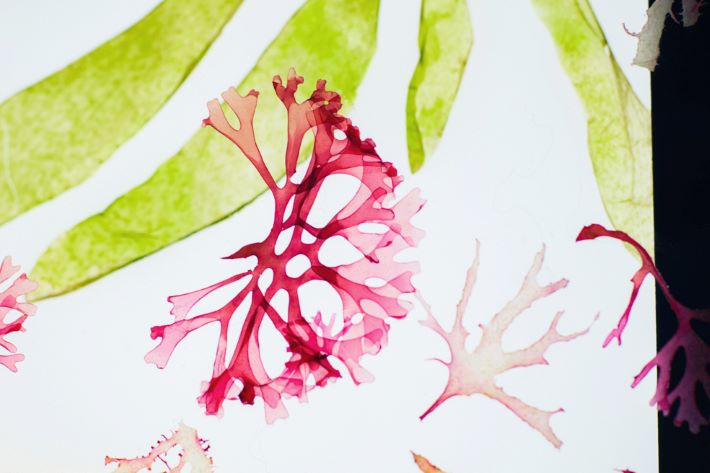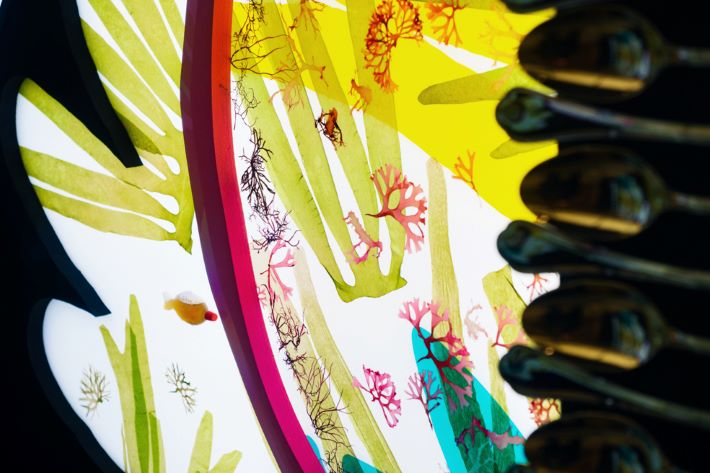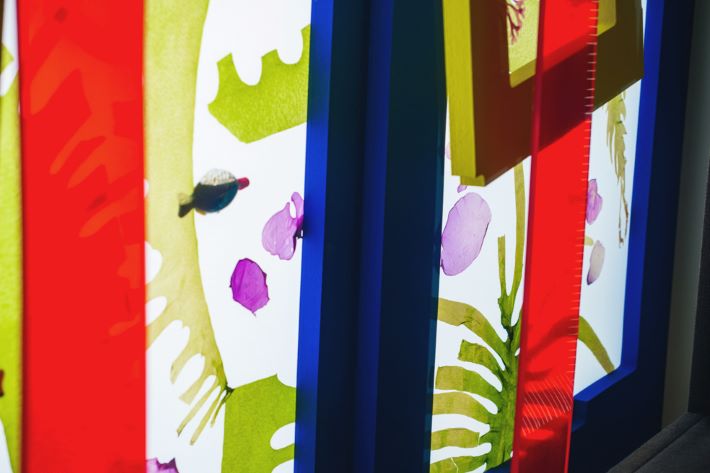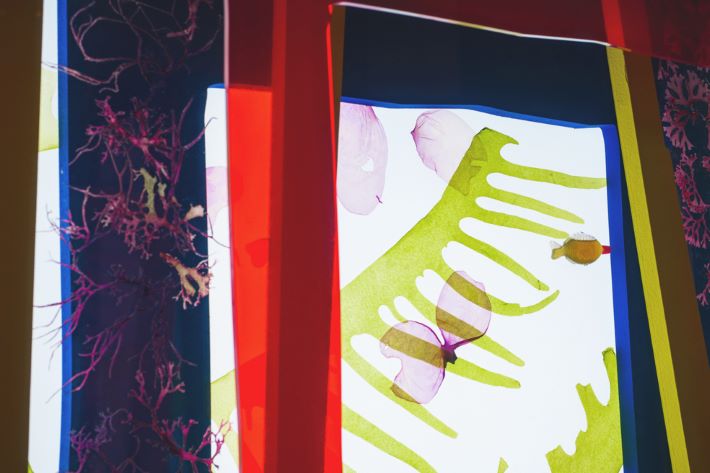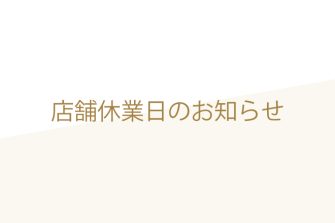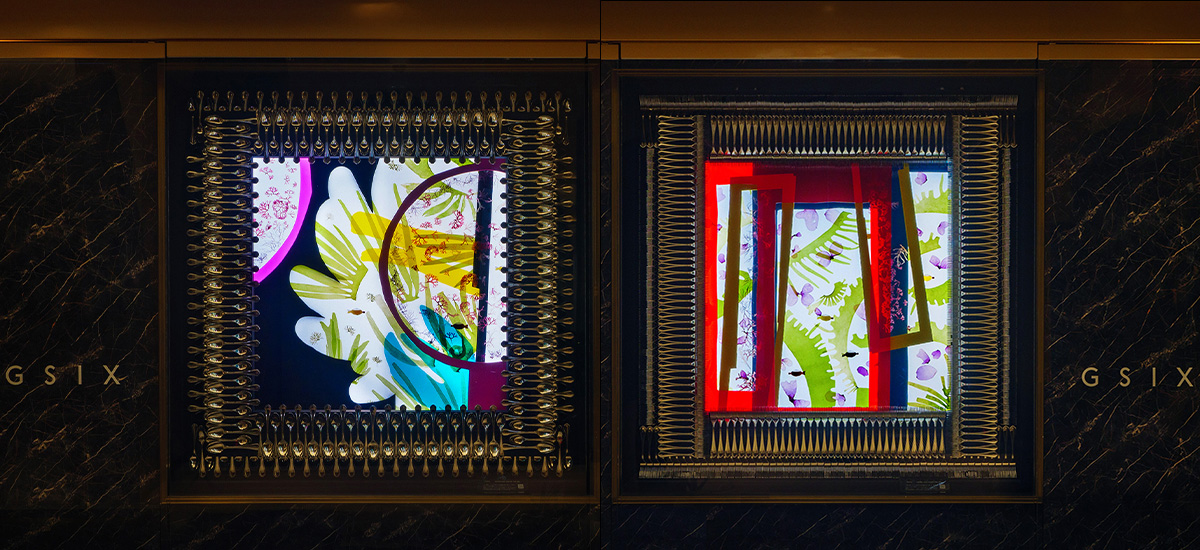
Summer「SWING JAZZ UNDER THE SEA」
Show Window
对于日本人来说,海藻作为身边食材的海藻近年来作为“未来食”备受瞩目。
海藻富含食物纤维、矿物质、维生素、蛋白质、美味、抗氧化物质的低卡路里,对健康和美容的人们来说被称为“超级食品”。至今为止没有吃海藻的习惯的欧美有机超市也开始使用,近20年来世界海藻的消费量增加了约3倍。
不使用肥料和农药,一年四季都能收获,以合适的价格得到海藻,在WWF UK与食品公司Knor合作选出的“Future Food 50”中排名,对于不断增加的世界人口,也期待着对将来食品安全保障做出贡献。加上培根风味的海藻等食物技术,作为替代肉的原料的研究也开始了。
作为海洋植物的海藻,和陆上植物一样,通过光合作用吸收二氧化碳(CO2)。在联合国环境计划(UNEP)的报告书中,针对在陆地上森林等地吸收的碳“绿色碳”,将海藻等海洋生态系统吸收的碳命名为“蓝车波恩”,为了阻止全球变暖,“蓝车波恩”也备受期待。海藻担负着海中氧生产的约一半,保护和再生海洋生态系统,在SDGs可持续开发目标的第14个“保护海洋的丰富性”方面也发挥着很大的作用。
从历史上也有着悠久多样海藻饮食文化的日本各地,收集作为食材流通的海藻做成了压叶。让人联想到海浪中挥舞着的海中的样子,流线型的形状和接受光透的颜色让人感受到美。请从这个窗口想象一下与海藻一起丰富的未来。
艺术总监
佐藤宁子
Seaweed, which Japanese people routinely enjoy as a food, has recently drawn attention as a food of the future.
Called a superfood by the health- and beauty-conscious, seaweed is low in calories but packed with fiber, minerals, vitamins, protein, antioxidants, and umami flavor. Although not a traditional food item in these regions, it can now be found in organic groceries in Europe and North America. In just over 20 years, the world’s seaweed consumption has nearly tripled.
Seaweed is inexpensive, requires no fertilizer or agricultural chemicals, and can be harvested year-round. It was named among the Future 50 Foods, a list compiled by the WWF UK in collaboration with Knorr, a food products brand. As the world’s population continues to grow, seaweed is expected to play a growing role in food security. Research has also begun on finding ways to use it as an alternative to meat—to produce, for example, seaweed that tastes like bacon.
As an ocean plant, seaweed absorbs carbon dioxide through photosynthesis, just as plants do on land. In a report issued by the United Nations Environment Programme (UNEP), whereas carbon dioxide absorbed by forests on land is called “green carbon,” carbon dioxide absorbed in marine ecosystems, e.g., by seaweed, is referred to as “blue carbon.” Hopes are high that blue carbon will help put the brakes on global warming. Seaweed, which accounts for nearly half the oxygen production in the ocean, has been called both a guardian of and restorative agent for marine ecosystems. It plays a key role in Sustainable Development Goal No. 14, “Life Below Water.”
Seaweed harvested as food in various regions in Japan, which have long histories of diverse seaweed cultures, is gathered and formed into pressed leaves. The flowing forms are reminiscent of how seaweed lives and grows at the will of the waves, how it swings and sways. Its translucent color in light has a striking beauty. We hope this window will inspire you to begin thinking about a prosperous future that involves seaweed.
Yasuko Sato
楼层: B2F
举办场所: 展窗
Period: 2024.06.07- 2024.09.06
结束了
2024.06.10 UP



